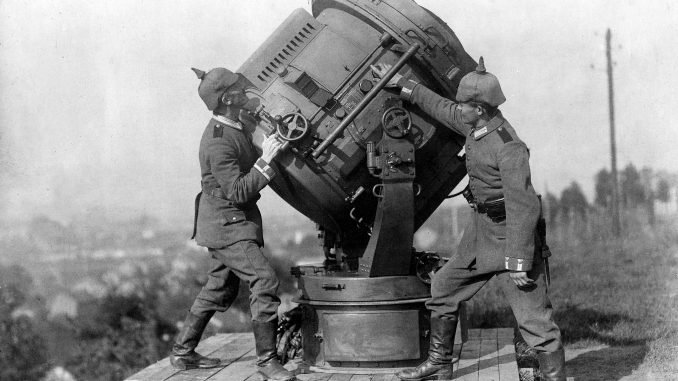
Political scientists often state, that the cause of war was the conflict of ambitions of big powers, fatal political mistakes, and unbalanced decisions. Also that postwar solutions were based on the belief that this Great War would be the last war in history. We know now that this was not a case. A century later, we can look at the legacies of this conflict more neutrally. Which goals were accomplished in the Great War? Which illusions evaporated? What were the impacts of the war on technological innovation, on the arts, and on our everyday lives? These are just a few aspects of the lasting effects of WWI.
First of all this war initiated the new World Order that replaced the old one formed from the agreements of the Congress of Vienna. The prewar order still stated, that the great powers, i.e. empires, were responsible for war prevention and peace agreements. The end of the Great War was also the end of empires, which were replaced by democratic states, the peoples of which were consolidated on the ethnic brotherhood rather on loyalty to traditional monarchial dynasties. The people had the feeling that being Finn, Czech, or Romanian was more important than being loyal to a Czar or Kaiser. US president Woodrow Wilson set out his plan for a lasting peace in his “Fourteen Points” speech to US Congress. The main point was the right for all nations to choose their own government without external influence. President Woodrow Wilson’s insistence on “national self-determination,” helped redraw the map of the continent.
In this context, democracy became the buzz word. Textbook parliamentary democracy became typical, but not really because it was invented by British politicians or US founding fathers. It became the raison d’être of states after WWI. Together with parliamentary democracy, the new political phenomenon was the introduction of voting rights for women. Incidentally, newly independent states (Lithuania among them) granted voting rights to women before the “old” Western countries.
Traditional empires vanished. The 19th century was the British century. Britain retained an empire covering one-fifth of the world until after World War II, but the apogee of its power had passed. The British empire lost the competition with a more dynamic Unites States. The US successfully exploited all of its geopolitical opportunities, and went from a middle income farmer state to a world superpower. The war enhanced that preeminence, amplifying its rising economic strength.
Democracy was the ideology of winners. The losers created their own alternatives. Though communism and fascism are not the direct inventions of the war, only after the war did they become political and social realities. These realities caused the concentration camps, glorification of leaders and… new wars.
The direct consequence of war was the evolution of warfare tactics and weaponry. The armies that went to war in 1914 equipped with cloth caps, horses, sabers, and rifles with bayonets—would have looked reasonably familiar to witnesses of wars from decades earlier. A combination of machine guns, barbed wire, and increasingly complex systems of concrete-reinforced trenches created a new picture of war by the end of the conflict. Battle tanks, air fighters, submarines had a decisive impact. It was expected that WWII would be a chemical war. This was not a case, and the role of battle tanks and air fighters was decisive. Add to this battle grenades, helmets, trenches (and even trench coats).
Battle tank history began in 1916. The British army brought 49 machines, or “landships,” against the Germans. These steel monsters terrified the infantry solders who witnessed saw them for the first time, though their deployment did not have a significant effect on the course of the war. The next spring, the French rolled out their own battle tanks with similarly mixed results. This, however, did not stop countries from constructing and improving on tank design. They showed their real capabilities in WWII and are still in service today.
The suffering and varied injuries of the wounded inspired new developments in medicine. One of them, plastic surgery, helped many injured combatants save face, literally.
Warfare was not the only area radically affected by the war. It brought new ideas into everyday life, culture, and the arts. Expressionism, Dadaism, constructivism, surrealism – these were new ideas. Even then, one dictator called these trends in art “degeneration,” but art lives longer than dictators. Crouching in a trench or exchanging gunfire with the enemy, soldiers hardly had the time to grab a watch from their pocket, open the case and check the time. The wristwatch was invented. Now, practically everyone has one. In 1920, the League of Nations held a meeting that standardized travel permits the warring countries had introduced. The Paris Conference on Passports, Customs Formalities and Through Tickets first defined the passport guidelines and the booklet design still used all over the world today.
It’s worth knowing that one of the inventions of WWI is daylight savings. The practice was introduced in 1916 as a temporary measure to save candles.Though sometimes nothing is more eternal, than temporary measures. Daylight savings was first introduced by the Germans, followed by the British, the French, and the Americans. It was later forgotten and re-introduced a few decades ago. Maybe as temporary measure again… but it’s still in use.
Finally we – Lithuanians – are the product of this horrible war. Lithuanian intellectuals successfully sized the opportunity to create the Lithuanian nation state. The geopolitical situation then was good enough to do it. Independent Lithuania had ups and downs, successes and troubles, nevertheless, it will soon celebrate its own 100-year anniversary.
Egidijus Vareikis is an MP and member of the conservative Homeland Union-Lithuanian Christian Democrats.

Be the first to comment